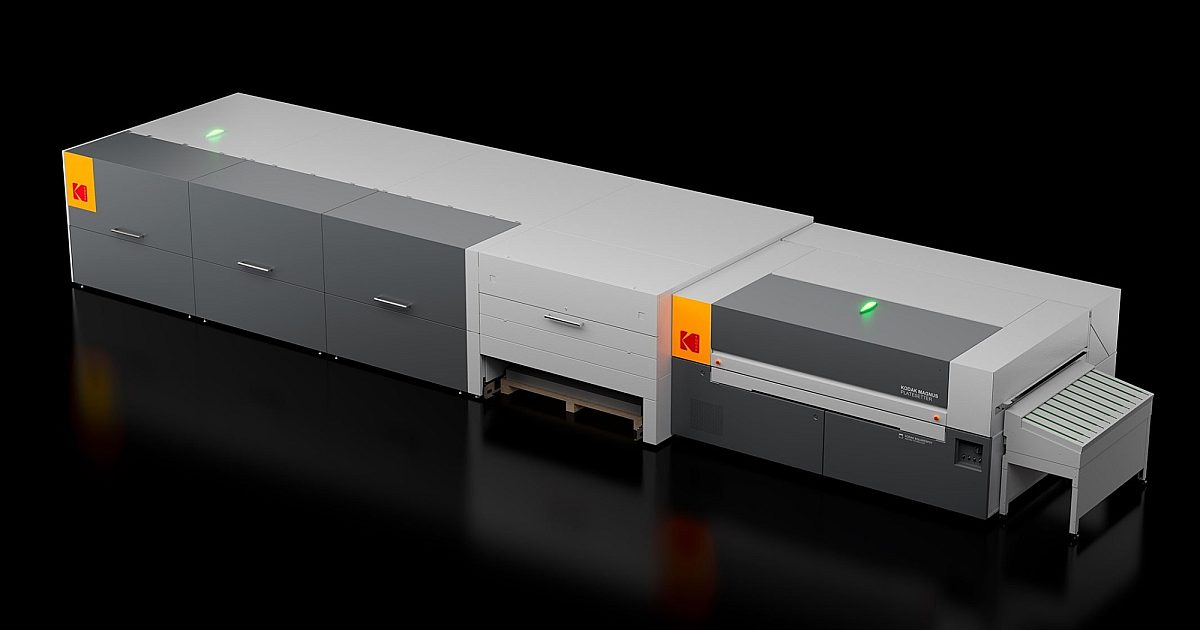
In today’s fast-paced printing industry, the need for a versatile, efficient, and high-quality platemaking solution is paramount. Kodak’s latest Computer-to-Plate (CTP) technology, epitomized by the MAGNUS Q3600 Titan Platesetter, stands out as a comprehensive solution capable of handling a diverse range of printing formats and requirements, from 4-up to Very Large Format (VLF). This technology not only supports various formats on packaging, sheetfed, or heatset web presses but also integrates advanced automation features that significantly enhance productivity and reduce operational costs.
Efficiency and Speed in Platemaking
Kodak’s CTP technology is designed for high-speed operations, boasting a maximum output of 52.6 plates per hour with the W speed option, coupled with an automated Multi-Pallet Loader (MPL). This feature allows a single operator to prepare and load a pallet with 1,500 plates in less than ten minutes, showcasing the system’s efficiency. The MPL itself can hold a maximum of 7,800 plates in up to eight different sizes, which exemplifies its capacity for high-volume jobs.
Remote Management and Accessibility
One of the standout features of this advanced CTP system is its remote operability. The KODAK Mobile CTP Control App enables users to manage operations remotely, offering 24/7 access to control devices, manage queues, and monitor multiple CTP systems from any location. This remote capability is enhanced by real-time notifications and alerts that keep users informed about production status, thus minimizing downtime and enhancing productivity.
Versatility and Compact Design
The MAGNUS Q3600 Titan Platesetter is not just versatile in terms of the plate sizes it can handle—from 483 x 394 mm to 1,600 x 2,083 mm—but it also features integrated internal punching with up to ten different punch heads. Its multi-pallet loading system combines up to three cassettes with pallets, providing increased flexibility within a compact space. This compact design ensures that the MPL configuration occupies a footprint three times smaller than that of its closest competitor, further enhancing its appeal to printing facilities looking to maximize their space.
Automatic Enhancements and Reduced Waste
The system’s automated features streamline the platemaking process, significantly reducing manual labor and the associated risks of plate damage. This automation leads to increased productivity by allowing the preparation and loading of up to 1,500 plates of various sizes in under ten minutes. Additionally, the reduction in manual plate handling directly contributes to decreased waste and operational costs, creating a more sustainable production environment.
Optimized Platemaking Solutions
The MAGNUS Q3600 Titan is particularly effective when used with KODAK SONORA XTRA Process Free Plates, which are designed to accommodate the system’s T-speed Plus imaging capabilities. These plates eliminate the need for a processing step, thereby reducing chemical use and enhancing environmental sustainability. Facilities looking to further optimize their output can upgrade to KODAK STACCATO Screening for exceptional tone and clarity, alongside the KODAK PRINERGY Workflow, which manages production seamlessly.
Service and Support
Kodak ensures continuous operation and profitability through a range of service engagements. These include Premier Service, which offers comprehensive support including continuous operator assistance and preventative maintenance; Plus Service, ideal for experienced facilities that require balance in service engagement; and Remote Service, which allows facilities to control their costs while receiving support as needed.
Overall, the Kodak MAGNUS Q3600 Titan Platesetter represents a pivotal advancement in the printing industry, providing a robust, efficient, and versatile solution that meets the high demands of modern platemaking. Its integration of advanced technologies and remote capabilities makes it an invaluable asset for any printing operation looking to leverage high productivity and exceptional print quality with minimal waste and operational costs.